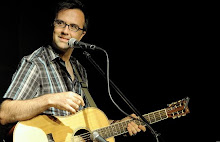I stopped by this morning at Capsule Music, my local higher-end used guitar store. In the 'bargain bin' I found a battered pink 80s iteration of the flanger, the forgotten pedal.
The flanger is by no means the only also-ran of the 1970s-80s effects pedal renaissance. Anyone plugged into an Aural Exciter lately? Even the once-mighty chorus pedal has largely fallen from grace, though I'm told that it is on the comeback trail, sales-wise.
Part of the problem for the flanger has been its similarity to both the chorus and phaser in its operation and sound. I've never owned a stand-alone flanger pedal myself. In fact, my only 'modulation' effects are an Electro-Harmonix Small Stone Nano
The exception to the flanger's general decline is the strong cachet of the A/DA flanger, which sells for at least $500 on the rare occasions that it shows up at a store like Capsule. As often as not, these esoteric pedals are snapped up by the roadies for mega rock stars like Neil Young and the Edge and stockpiled in case of failure.
The origin of flanging, first as a recording studio effect and later as a stand-alone effects pedal, is tied up with the recording history of the Beatles. It is popularly acknowledged (with some compelling alternative histories) that Abbey Road engineer Ken Townsend was responsible for first harnessing the effects of pressing on the flanges of moving tape reels on multiple machines. As the story goes,
it was Lennon who actually gave the process the name "flanging." Lennon asked Beatles producer George Martin to explain how ADT worked, and Martin answered with the nonsense explanation, "Now listen, it's very simple. We take the original image and we split it through a double-bifurcated sploshing flange with double negative feedback." From that point on, whenever Lennon wanted a Beatles song double-tracked, he would ask for "Ken's flanger". According to Lewisohn, "The Beatles' influence was so vast that the term "flanging" is still in use today, more than 20 years on." - http://en.wikipedia.org/wiki/FlangerOnce used to help realize the groundbreaking production of "Tomorrow Never Knows" in 1966, flanging (along with the Leslie rotating cabinet) was used almost obsessively by the Beatles to render wobbly, psychedelic guitars (or voices, or pianos).
One of the more interesting, and dated, uses of the flanger would have to be its employment with full band mixes, such as at :51 in the Small Faces' 1967 single, "Itchycoo Park":
Or after 2:48 for the coda of "Bold As Love" by the Jimi Hendrix Experience:
Or at 2:17 in the Doobie Brothers' 1972 "Listen To The Music":
Remember when ugly bands could still make it?
One of the last examples of non-ironic full-band flanging must be the bridge of the Eagles' "Life In The Fast Lane" (sorry, no YouTube video of the litigious Eagles' 1976 studio recording of this song).
I would theorize that full-band flanging was more popular when flanging was a studio-only effect. It was quite easy to flange an entire section of a mixdown - vocals, instruments, and reverb (flanged reverb is prominent in the Hendrix example). When improvements in integrated circuits allowed the flanging effect to be implemented in a small, battery-operated effects pedal, flanging shifted towards being a guitar-only effect.
The A/DA was the first commercial flanger pedal, introduced in June 1977. Eddie Van Halen was an early adopter of one of the first to follow, the MXR:
The Ibanez Jetlyzer was another popular flanger of the seventies. In the late 70s and early 80s, the flanger pedal was fairly ubiquitous on guitar tracks, especially clean chord strums and arpeggios. But the pedal slowly declined in popularity along with chorus. It might be argued that flanging was the innocent victim of the overexposure of chorused guitar in 1980s pop music.
Lenny Kravitz's 1993 "Are You Gonna Go My Way" is a prime example of ironic flanging - the entire mix is heavily flanged at one point, exaggerating the most subtle full-band flanging of the Small Faces and Beatles. The full-band flange section begins at 2:10 for the climactic instrumental section:
I think that the flanger did not survive its initial novelty appeal because it imposed too coherent a sonic text on the music that it was used for. Once you knew the sound of the flanger, it was easy to identify - it was an exposed and ubiquitous code that tended, over time, to overtake the songs. The prominent (and recognizable) flanging effect helped to turn "Itchycoo Park" into a relic. It subsequently became a go-to pedal for overtly nostalgic sixties effects, as in Lenny Kravitz' sonic museum. But it became a rarity on the pedalboards of the musical rank and file.
There may be a cult of the flanger still out there, but I'm not aware of it. Musicians and music store staff that I have asked about the flanger seem ambivalent - they're aware of it, it may even be in a multi-effect unit that they have, but it's not seen as a staple effect. The only way to have any certainly about these things is to get facts and figures, which as far as I know are not published. I'd like to know, for example, how many flangers did Boss sell last year compared to Metal Zone pedals?












No comments:
Post a Comment